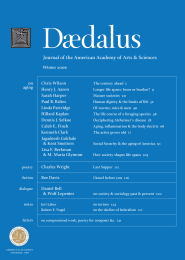How society shapes aging: the centrality of variability
We have all known people who grow old suddenly or seem much older than their chronological age. Conversely, we see people who appear vibrant and seem resilient to the challenges they face late in life. What role does society play in shaping these distinct outcomes of aging? The kinds of difficulties each of us are liable to face as we grow older are determined by our opportunities for social interaction and intimacy, by our economic and educational experiences, and by our exposure to severe social and physical stresses. We believe that a great deal of what superficially may seem like random variability in health outcomes is in fact patterned by the kinds of social and economic experiences that people confront throughout their lives. Such variability is key to understanding aging.
Social conditions help determine several health outcomes as we age. Variations in life expectancy and disability, for example, reflect differences in past social investments in the health and well-being of different groups within society. Perhaps more surprising, aging at the biological level–as indicated by measures of metabolic function, glucose metabolism, blood pressure regulation, and pulmonary function–is also correlated with social conditions.
One of the most common indicators of health and aging used in epidemiology and demography is life expectancy, a summary estimate of how long we can expect people to live in the future. Life-expectancy measures are derived from current death rates for men and women in specific age groups. The assumption is that age-specific death rates today will be applicable in the future. Because death rates historically have changed rather quickly, though, projections are not always very accurate.
. . .
